In today’s world, almost everything we do involves technology, from banking and shopping to communicating with friends and family. With most of our sensitive data circulating online, third parties and malicious players stand to benefit from our information daily.
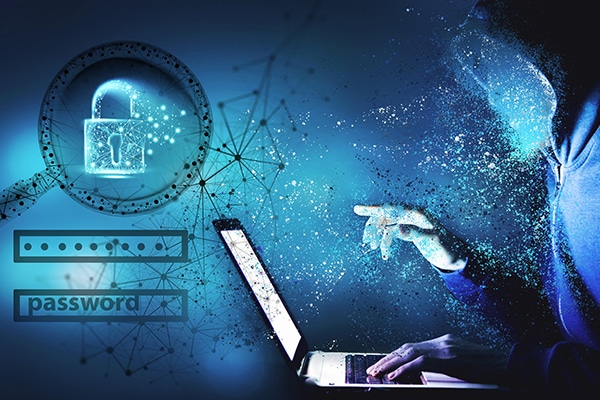
We cannot overstate the danger of cyber security threats in today’s digital world. These threats can take various insidious forms and can very quickly compromise the security and privacy of individuals, businesses, and government agencies.
So, what are cybersecurity threats? And why is it so important to safeguard ourselves against them?
Anything that threatens the stability and operations in our technological paradigm constitutes a cyber security threat. Anything that can harm or potentially harm the stream of information that makes up our online lives threatens our information security.
Table of Contents
What Is a Cyber Attack, and Why Do They Happen?
Cyber attacks are a significant concern in today’s digital age. These attacks are attempts to steal, expose, alter, disable, or destroy information through unauthorized access to computer systems.
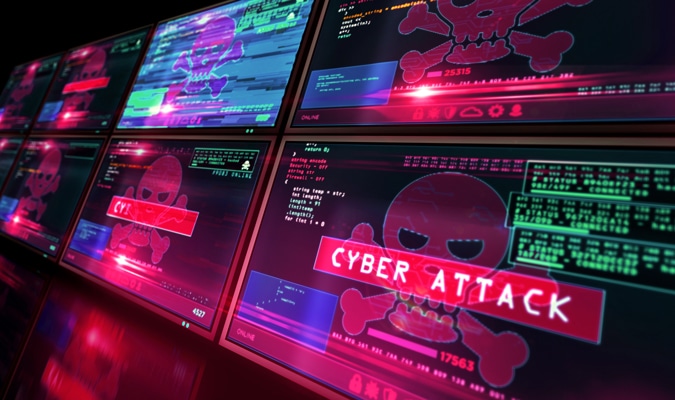
While criminals can carry out cyber-attacks, seeking financial gain through data theft or business disruption, personal or political players can also be responsible. For example, disgruntled employees or hacktivists may look to steal sensitive data in retribution against an organization.
The intellectual challenge of breaching a company’s cyber defenses can also motivate some attackers. Regardless of the motivation, cyber attacks seriously threaten individuals, businesses, and organizations.
Common Sources of Cyber Security Threats
Organizations have to be very particular about safeguarding themselves from malicious threats. Several entities can seek to harm businesses and governments, including:
Nation-states
One common source of cyber threats is nation-states. These threats can come from hostile countries that aim to interfere with communications, cause disorder, and damage local companies and institutions. These attacks can be particularly damaging because they often come from well-funded and highly skilled attackers.
Terrorist GROUPS
Terrorist groups are another common source of cyber threats. These organizations use cyber attacks to destroy or abuse critical infrastructure, threaten national security, disrupt economies, and cause bodily harm to citizens. These attacks can be devastating and usually aim at causing widespread fear and chaos.
Criminal groups
Criminal groups are another common source of cyber threats. These groups often use phishing, spam, spyware, malware, or malicious software to extort money, steal data and private information, and engage in online scams. Financial gain usually motivates these attacks, and they can be very sophisticated.
Hackers
Hackers are another common source of cyber threats. These individuals can be motivated by various factors, including personal gain, revenge, financial gain, or political activity. Hackers often develop new threats to advance their criminal abilities and improve their standing in the hacker community.
Malicious insiders
Finally, malicious actors can also pose a threat to organizations. These malicious intruders have legitimate access to company assets and abuse their privileges to steal information or damage computing systems for economic or personal gain. Insiders can be employees, contractors, suppliers, or partners of the target organization.
Different Types of Cyber Security Threats
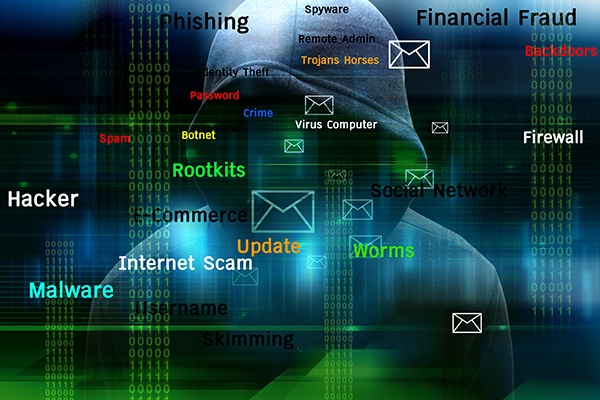
There are many different types and subtypes of cyber security threats, each with its own characteristics and potential impacts:
- Malware: Malware is a type of software specifically designed to harm or exploit computer systems. Several subtypes of malware attacks include viruses, worms, Trojan horses, and ransomware.
- Phishing: Phishing is a type of cyber attack involving tricking individuals into revealing sensitive information, such as passwords or bank account numbers, through fake websites or emails.
- Distributed Denial of Service (DDoS) Attacks: DDoS attacks work by overwhelming a website or network with traffic, making it unavailable to legitimate users. Attackers often use them as a form of extortion while threatening to launch a DDoS attack unless the organization pays a ransom.
- Man-in-the-Middle (MitM) Attacks: MitM attacks involve an attacker intercepting and manipulating communications between two parties without their knowledge.
- SQL Injection attacks involve injecting malicious code into a database through a vulnerable website or application.
- Password Attacks: Password attacks involve attempting to guess or crack passwords to gain access to a system or data.
- Insider Threats: Insider threats involve individuals with legitimate access to a system or data using that access to harm the organization or steal sensitive information.
- Advanced Persistent Threats: An advanced persistent threat occurs when an unauthorized user gains access to a computer system or network and stays there for an extended time without being detected.
Several subtypes of malware attacks include viruses, worms, Trojan horses, and ransomware.
- A virus is a type of malware designed to replicate itself and spread from one computer to another. It typically spreads through user interaction, such as opening an infected email attachment. Once a virus is on a computer, it can cause various issues, from slowing down the system to stealing sensitive information.
- Worms are similar to viruses but self-replicating and do not need user interaction to spread. They can cause many problems, such as consuming network bandwidth and slowing down systems.
- Trojan horses are another type of malware that masquerades as legitimate software, but they actually contain malicious code used to gain access to a computer system. They often come from fake antivirus programs or free software downloads.
- Ransomware is a type of malware that encrypts a victim’s files, making them inaccessible until the victim pays a ransom to the attacker to decrypt them. These attacks can devastate businesses, resulting in the loss of essential data and revenue.
What Are the Biggest Cyber Threats in 2023?
It is vital to stay informed about the latest threats to information security and safeguard our computer systems and online identity.
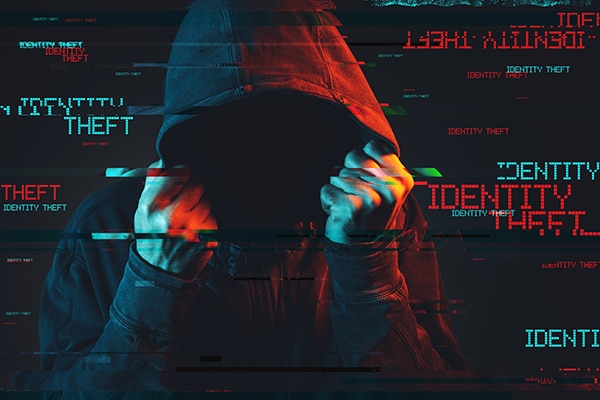
Let’s look at some of the most prevalent cyber security threats of present times and discuss what we can do to mitigate these risks.
Malvertising
Malvertising is a major cyber security threat. Short for malicious advertising, it involves hackers embedding malicious codes into advertisement links. These links can appear on websites that permit third-party advertising networks and even in social media feeds.
Zero-day Exploits
Another common cyber security threat is the zero-day exploit. Zero-day exploits are security vulnerabilities that cybercriminals exploit before organizations release patches to fix them. These vulnerabilities often impact software providers, such as Microsoft Exchange servers.
Covid-themed Phishing
Covid-themed phishing attacks are a type of cyber attack where hackers trick victims into clicking on malicious links through emails or websites that appear harmless.
These attacks often use fear, such as anxiety about the coronavirus pandemic, to motivate people to interact with the links, leading to a successful credential theft process.

Polyglot Files
Polyglot files can have multiple file type identities, such as a PPT and JS file. While these files are not inherently harmful, cybercriminals may package malicious code to bypass file-type security controls.
Social Engineering
Social engineering is a type of cyber threat where hackers obtain login credentials through manipulation and trickery. Phishing campaigns through emails are a common form of social engineering, but these threats can also occur in person.
Phishing attacks are a subcategory of social engineering that typically occur through email. In these attacks, cybercriminals send emails pretending to be from a reputable source, such as a senior staff member or law enforcement agency, and convince recipients to click on an infected link or download an infected attachment. These actions lead to decoy websites or applications that steal sensitive information or internal credentials.
Effective Cybersecurity Solutions
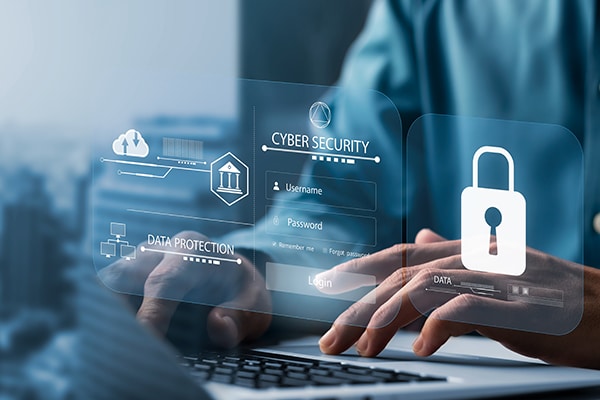
Cybersecurity solutions are tools and techniques that help prevent these threats to information security from compromising sensitive data. Cybersecurity solutions are designed to address specific online threats. Some of the best practices for cybersecurity include:
- Firewalls: Firewalls are software or hardware devices that act as a barrier between a computer or network and the internet. They block incoming traffic that does not meet predetermined security criteria, and organizations can also configure them to allow only specific types of traffic through.
- Antivirus software: Antivirus software can detect and remove viruses, worms, and other types of malware that can harm a computer or network. It works by scanning files and data for signs of malware and can also run periodic scans to identify and remove any new threats.
- Encryption: Encryption is the process of encoding data so that only those with the appropriate decryption key can access it. This is useful for protecting sensitive information, such as passwords and financial data, from unauthorized parties’ access.
- Two-factor authentication: Two-factor authentication is a security process requiring users to provide two separate pieces of information to access an account or system. This can include something the user knows, such as a password, and something the user has, such as a physical token or a code sent to their phone.
- Network security measures protect a computer or network from unauthorized access or attacks. This can include firewalls, intrusion detection systems, and network access controls.
The Best Cybersecurity Practices
As the increasing reliance on technology and the internet has made us more vulnerable to cyber threats, safeguarding against them is the need of the hour.
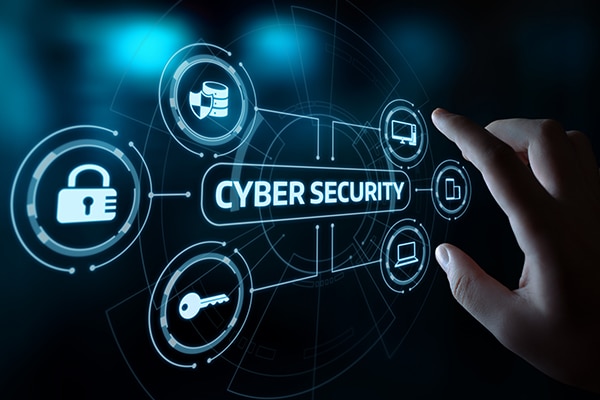
Here are some of the best practices you can follow for your organization.
- First and foremost, it is crucial to have an insider threat program in place. This means having policies to prevent employees from misusing their access privileges to steal or destroy corporate data.
- Training employees is another important step in improving cybersecurity. Employees are the first defense against cyber threats, so it’s important to conduct comprehensive cybersecurity awareness programs to teach them how to recognize and respond to threats.
- Maintaining compliance with data regulations is also important. Regardless of the level of cybersecurity an organization has, it must ensure that it complies with regulations that apply to its industry and location.
- In today’s digital age, no organization is immune to cyberattacks. That’s why it’s important to have a Cyber Security Incident Response Plan (CSIRP) in place. This plan outlines preparing for, responding to, and recovering from cyber threats.
- Cyber threats constantly evolve, and an outdated security network can put an organization at risk. Organizations can avoid potential threats by regularly updating security networks and associated systems and software.
- Backing up data is another important practice for protecting against data breaches. This includes periodically backing up websites, applications, databases, emails, attachments, files, calendars, and more.
- Conducting phishing simulations can also help educate employees about the importance of avoiding malicious links and attachments. These simulations can help employees understand the potential impact of a phishing attack on an organization.
- Finally, securing websites with HTTPS and an SSL (Secure Sockets Layer) certificate is essential. This helps to protect the integrity and confidentiality of data between users and the website.
The Final Verdict
Cybersecurity is an important aspect of modern life, and protecting yourself and your sensitive information is always essential. Cybersecurity professionals are crucial in protecting organizations and individuals from cyber threats. By pursuing a degree in cybersecurity, you can make a positive impact on society by helping to keep people and their information safe.
A degree in cybersecurity can help you stand out in the job market and increase your chances of getting a job in various sectors, including government, healthcare, finance, and more. Cybersecurity professionals are well compensated for their skills and expertise.
The New England Institute of Technology offers a range of cybersecurity programs to help you gain the skills and knowledge needed to succeed in this field.
FAQs
What is the difference between a cyber attack and a cyber threat?
Cyber attacks refer to malicious actions by hackers, cybercriminals, or nation-states to exploit vulnerabilities in computer systems, networks, or devices for financial gain, espionage, or other purposes.
Cyber threats, on the other hand, refer to potential risks or vulnerabilities that hackers can exploit to carry out a cyber attack. Cyber threats can be malware, phishing scams, ransomware, or other types of online attacks.
Why is cyber security important?
Cyber security is important because our increasingly digital world relies on the internet and electronic devices for communication, entertainment, banking, shopping, education, and many other activities.
These devices and systems store and transmit sensitive information such as personal data, financial details, intellectual property, and confidential business secrets. A cyber attack can compromise this information, leading to financial losses, identity theft, reputational damage, and other consequences for individuals and organizations.
What are the four methods of threat detection?
There are four main methods of detecting cyber threats, which include:
- Firewalls: These are software or hardware devices that monitor and control incoming and outgoing network traffic based on predetermined security rules.
- Antivirus software: These programs scan for and remove malware from computers, servers, and other devices.
- Intrusion detection and prevention systems (IDPS): These systems monitor network traffic and identify suspicious activity that may indicate an attempted cyber-attack.
- Vulnerability scanning: This involves using specialized software to scan networks and systems for weaknesses that cybercriminals can exploit.
How does cyber security prevent cyber attacks?
Cyber security prevents cyber attacks by implementing various measures to secure computer systems, networks, and devices. This can include installing firewalls, antivirus software, and IDPS, as well as implementing strong passwords, regular software updates, and safe practices such as two-factor authentication.
What happens during a cyber-attack?
During a cyber attack, hackers attempt to gain unauthorized access to a computer system, network, or device. They may exploit vulnerabilities, install malware, or trick users into revealing their login credentials. If successful, the attackers can steal or destroy data, disrupt operations, or gain control over the system.

